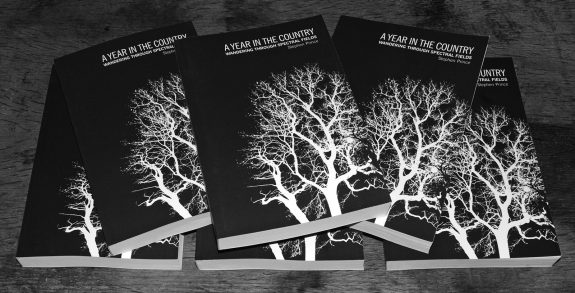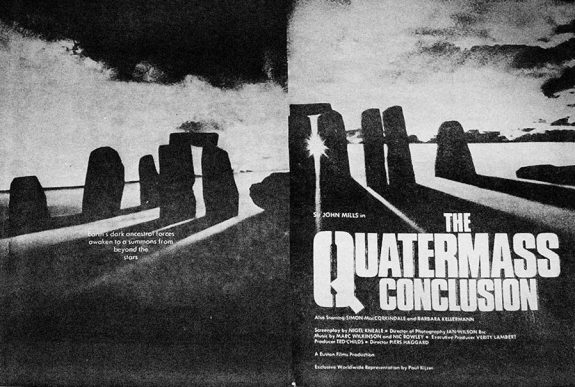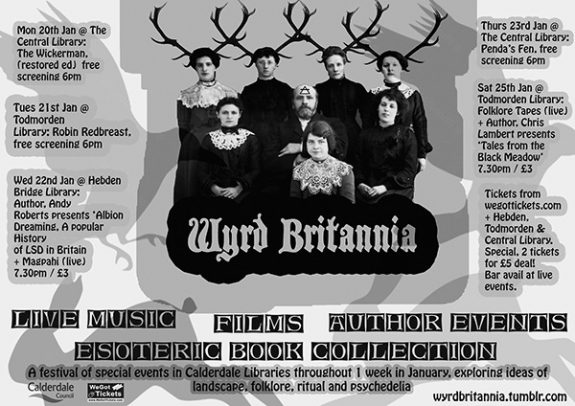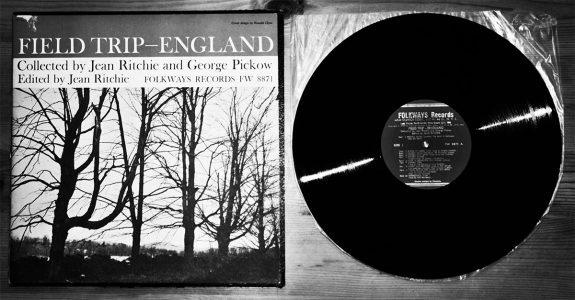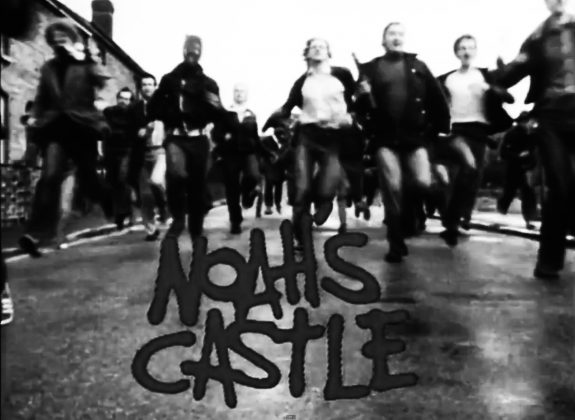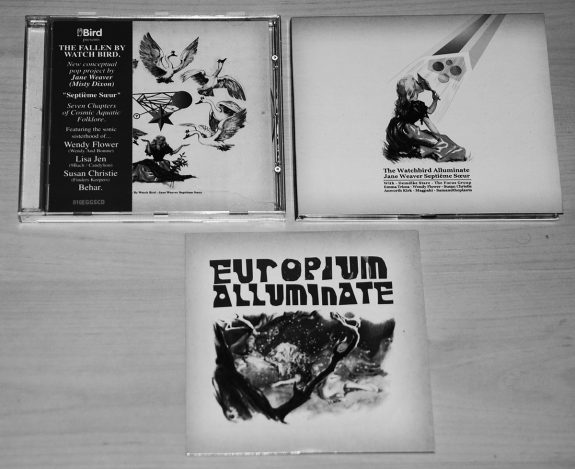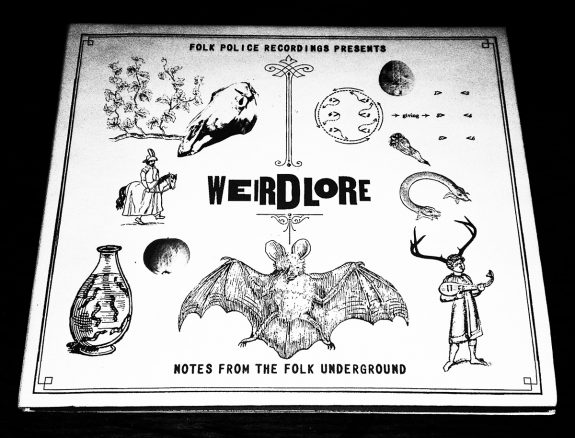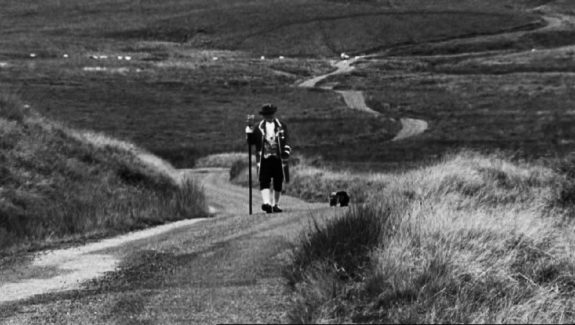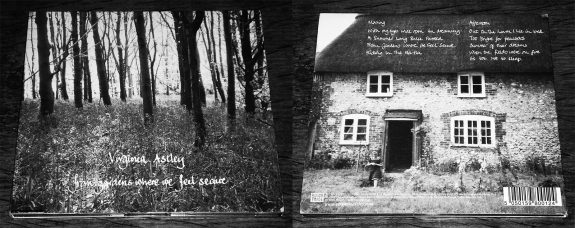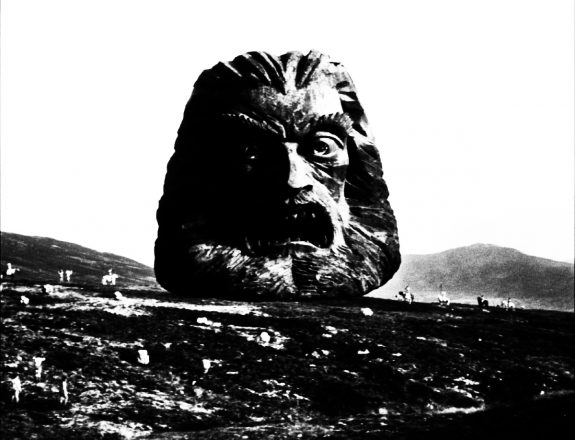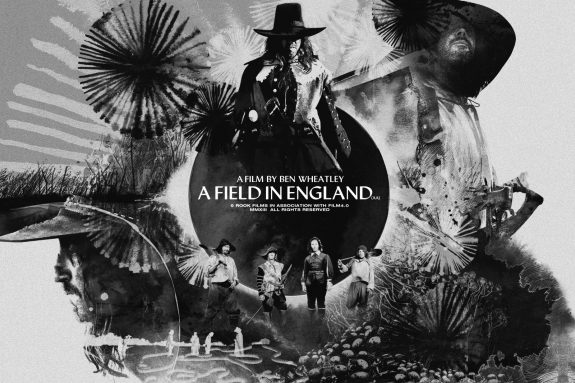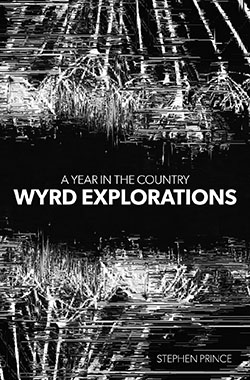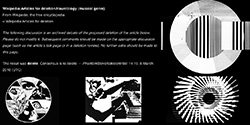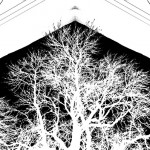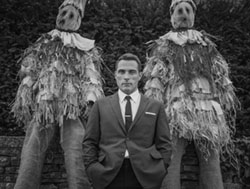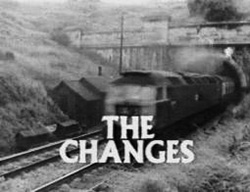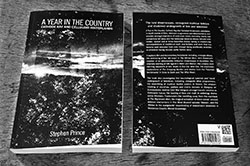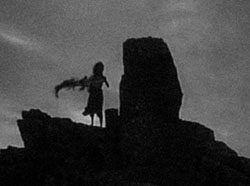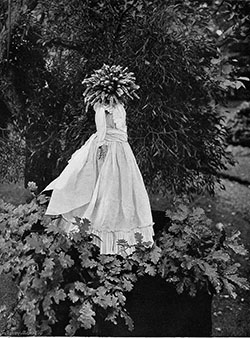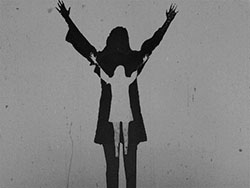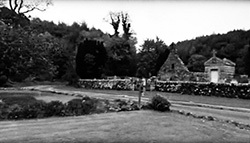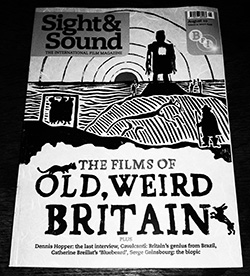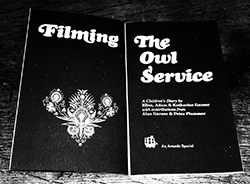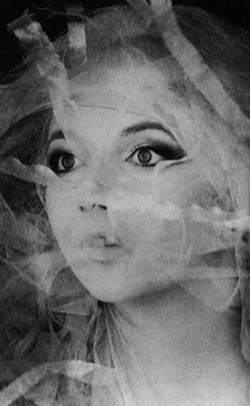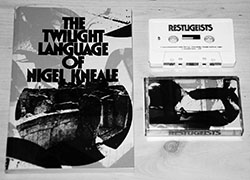Over the last year or two Chris Lambert, working as Wyrd Kalendar, has been creating an “aural appendix” to the A Year In The Country: Wandering Through Spectral Fields book.
This has taken the form of audio mixes posted at Mixcloud that include music discussed in the book and/or inspired by the topics covered in it, extracts and soundtracks from the film and television programmes featured in the book and so on.
Reflecting the structure of Wandering Through Spectral Fields, which takes its cue from the cycle of the year, there are four of these mixes, as there are seasons in the year.
Each mix is presented by the Kalendar Host and explores 13 chapters of the book: the fourth and final one is now online and “steps over the Ghost Box stile for one last time”. Below is the tracklisting for it:
Chapter 40: The Stone Tape, Quatermass, The Road and The Twilight Language of Nigel Kneale – Unearthing Tales from Buried Ancient Pasts
1) Quatermass and the Pit – Closing titles by Tristram Carey (careful where you go digging, you don’t know what you might find!)
2) An extract from the radio drama of Nigel Kneale’s The Stone Tape (which was an adaptation written by Matthew Graham and Peter Strickland, the latter of whom also directed it, and featured music and electronics by James Cargill of Broadcast, with vocal effects by Andrew Liles).
3) Hobgoblins by Mount Vernon Arts Lab (from the 2001 hauntological antecedent album The Séance at Hobs Lane, which was reissued by Ghost Box Records in 2007).
4) Electronic Music Cues by Tristram Carey (further work from Tristram Carey for Quatermass and the Pit).
5) Disempowered by Olan Mill (something of an ambient musical respite, which here is intertwined with a reciting of the rhyme Huffity Puffity from the final series of Quatermass).
Chapter 41: Folklore Tapes and the Wyrd Britannia Festival – Journeying to Hidden Corners of the Land/the ferrous Reels and Explorations of an Arcane Research Project
6) Ritual in Devon Folklore by Paper Dollhouse (spectral wordless singing, created for the Folklore Tapes project, that wouldn’t be out of place on Cat’s Eyes’ The Duke of Burgundy soundtrack).
7) Fields of Blackberry by The Soulless Party (on which Chris Lambert sings an unaccompanied folk-style song, which sounds as though it has tumbled backwards and forwards through time from a set of field trip recordings back when, and which is featured on The Soulless Party album Tales from the Black Meadow that accompanied Chris Lambert’s book of the same name).
Chapter 42: Skeletons – Pastoral Preternatural Fiction an a World, Time and Place of its Own Imagining
8) Polregnala E Pschenitza by The Bulgarian State and Television Female Vocal Choir (who contributed to Le Mystère des Voix Bulgares album released on 4AD, and whose work seems to have almost uncannily and coincidentally synced with the “classic” 1980s 4AD ethereal sound).
Chapter 43: Field-Trip England – Jean Ritchie, George Pickow and Recordings from the end of an Era
9) John Barleycorn by Haxey Hood Singers and Customers at The Kings Arms, Haxey Lincolnshire (a playful harvesting song that if you listen to the lyrics is both grizzyly and seems to be folk horror-ish before the phrase existed).
10) Jonny Todd by Isla Cameron and Ewan McColl (a folk song duet that you could almost imagine soundtracking a tale in Bagpuss!)
11) Oranges and Lemons by Dianne Endicott (a reciting of a traditional rhyme, the lyrics to which are also a little grizzly when you think about it).
Chapter 44: Noah’s Castle – A Slightly Overlooked Artifact and Teatime Dystopias
12) Noah’s Castle by Jugg (a fine slice of “teatime dystopia” soundtracking synthery).
Chapter 45: Jane Weaver Septieme Soeur and The Fallen by Watch Bird – Non-Populist Pop and Cosmic Aquatic Folklore
13) Europium Alluminate by Jane Weaver with Demdike Stare (a rumbling, ominous soundscape reimagining of the original, with Jane Weaver’s voice a spectral will o’ the wisp off in the distance).
14) The Fallen by Watchbird by Jane Weaver (non-populist pop at its finest).
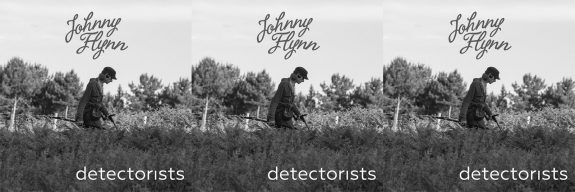
Chapter 46: Detectorists, Bagpuss, The Wombles and the Good Life – Views from a Gentler Landscape
15) The Miller’s Song by Beautify Junkyards (which opens the Tiddlywinks album released by Mega Dodo, which was released in aid of Save the Children, on which nursery rhymes are reimagined).
16) Detectorists by Johnny Flynn (a joyful yet quietly melancholic song; “I’m with the ghosts of the men who can never sing again”).
17) The Bony King of Nowhere by John Faulkner and Sandra Kerr (and there’s nothing like a visit to the marvellous mechanical mouse organ, accompanied by some musical “bleeping” or censoring!)
18) The Good Life by Matt Berry (from his Television Themes album of subtley reinvented theme music).
19) Womblin’ Free by The Wombles (underground, overground…)
Chapter 47: Weirdlore, Folk Police Recordings, Sproatly Smith and Seasons They Change – Notes from the Folk Underground, Legendary Lost Focal Points and Privately Pressed Folk
20) Blackthorn Winter by Sproatly Smith (lovely pastoral acid folk from the Weirdlore compilation).
21) Gently Johnny by The Woodbine and Ivy Band (a softly seductive siren call – if Kate Bush’s In The Warm Room was a slice of folkloric Americana that had somehow ended up The Wicker Man soundtrack, it might sound a little like this).
22) Nottanum Town by Oberon (a classic example of privately pressed folk from 1971, originally released in an edition of just 99 copies).
23) Rosebud in June by Sproatly Smith (and talking of The Wicker Man, as said on the Gaping Silence silence website, this song is “…like something from The Wicker Man, if The Wicker Man had been a 1960s children’s TV series about time travel”).
Chapter 48: The Moon and the Sledgehammer and Sleep Furiously – Visions of Parallel and Fading Lives
24) Avril 14 by Aphex Twin (from Sleep Furiously but this piece of gentle piano song is far removed from the electronic music you might expect from Aphex Twin).
25) Ma’er Aderyn Glas by Trefeurig Community Choir (this is a track performed by a village choir in Sleep Furiously – the title translates as “The Bluebird”).
26) Extract from The Moon and The Sledgehammer (a collage of sounds and voices from the film, which evocatively conjures up the lives of the family it focuses on).
Chapter 49: From Gardens Where We Feel Secure, Wintersongs, Pilgrim Chants & Pastoral Trails – Lullabies for the Land and Gently Darkened Undercurrents
27) Hearth by Plinth (from the gently melancholic pastoral album Wintersongs).
28) It’s Too Hot to Sleep by Virginia Astley (a bucolic lullabye full of owl song…)
29) Dark Pool by Sharron Kraus (…and its fever dream flipside, from the album Pilgrim Chants & Pastoral Trails).
Chapter 50: Strawberry Fields and Wreckers – The Countryside and Coastal Hinterland as Emotional Edgeland
30) Labour of Love – Troubadour Rose (an Americana tinged song from the soundtrack to the pastoral hinterland of the film Strawberry Fields).
31) To the Barn by Andrew Lovett (further gentle piano song, as featured on the soundtrack to Wreckers).
Chapter 51: Zardoz, Phase IV and Beyond the Black Rainbow – Seeking the Future in Secret Rooms from the Past and Psychedelic Cinematic Corners
32) Zardoz Opening by David Munrow and his Early Music Consort of London (choral chants from the world of the Vortex).
33) Phase IV by Brian Gascoigne and David Briscoe (considering the nature of the film this is misleadingly gentle contemporary classical in style… although it segues into something much more John Carpenter-esque).
34) Run Program: Sentionauts by Sinoia Caves (…and talking of John Carpenter-esque… from the soundtrack to the “Reagan era fever dream” of Beyond the Black Rainbow).
Chapter 52: Winstanley, A Field in England and The English Civil War Part II – Reflections on Turning Points and Moments When Anything Could Happen
35) The Damp of Hell by Jim Williams (from the soundtrack to A Field in England, this could well be a darkened piece of worship orientated music, which fades away into the ghost of a dream…)
36) The Digger’s Song by Chumbawumba (a performance of the 17th century protest song, which connects with the story of the film Winstanley).
37) Excerpt from The Battle of Orgreave (extracts from the Jeremy Deller and Mike Figgis’ film, which featured original archival material and a contemporary re-enactment of a turning point in British history).
38) Walking There, Two Shadows Went by Jim Williams (and to – almost – finish the mix and its journey, another track from the soundtrack to A Field in England).
The mix ends with some final words from the Kalendar Host: “I trust you have enjoyed your jaunt through the spectral fields… goodbye for now, tread carefully.”
It’s well worth putting on some sensible shoes, packing some sandwiches (and a cagoule just in case) and stepping over the Ghost Box stile with him…
Chris Lambert is the author of several books which explore the myths and mysteries of the Black Meadow, including Tales from the Black Meadow, Christmas on The Black Meadow, Songs from the Black Meadow and The Black Meadow Archive Volume 1. He is also the author of Wyrd Kalendar, illustrated by Andy Paciorek of Folk Horror Revival, which takes a dark fictional journey through the months of the year. Details of the books can be found at his website.
Links:
- The final Spectral Fields Wyrd Kalendar Mix at Mixcloud
- Chris Lambert’s Tales from the Black Meadow website
- The Soulless Party’s Tales from the Black Meadow album
- The Soulless Party’s The Black Meadow Archive Volume 1 album
- The Wyrd Kalendar book
- The Wyrd Kalendar album
- The Tiddlywinks album of reimagined nursery rhymes
- Sproatly Smith’s Bandcamp page
- Sharron Kraus’ Pilgrim Chants & Pastoral Trails
- Jane Weaver’s The Fallen by Watch Bird at Finders Keepers Records’ site
- A Field in England soundtrack at Rook Films’ shop
- Mount Vernon Arts Lab’s The Séance at Hobs Lane at Ghost Box Record’s site
Elsewhere at A Year In The Country:
- The first Spectral Fields Wyrd Kalendar Mix
- The second Spectral Fields Wyrd Kalendar Mix
- The third Spectral Fields Wyrd Kalendar Mix
- Tales from the Black Meadow, The Book of the Lost and The Equestrian Vortex – The Imagined Spaces of Imaginary Soundtracks
- Wyrd Britannia, Folklore Tapes, Magpahi, Tales From The Black Meadow and English Libraries
- The A Year In The Country: Wandering Through Spectral Fields book




